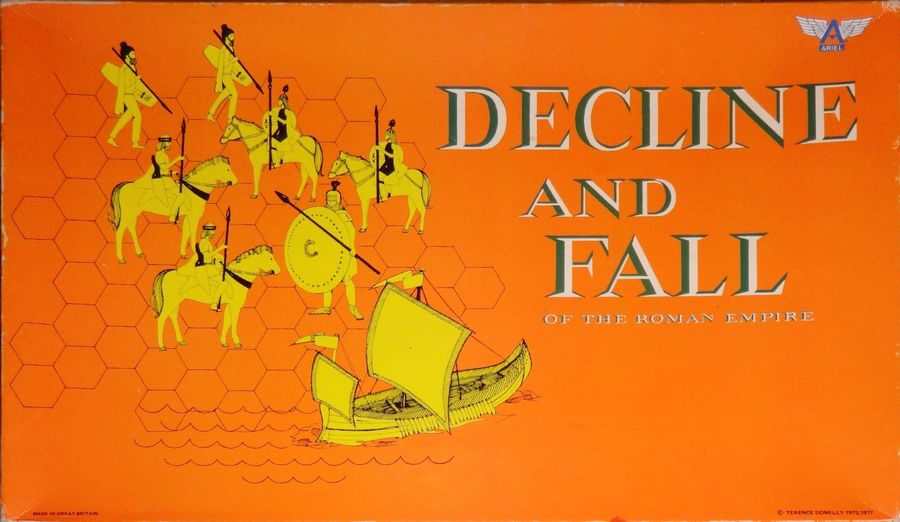Decline and Fall of the Roman Empire (1972) Board Game
The Decline and Fall of the Roman Empire board game was released in 1972 and designed by Terence Peter Donnelly. The game takes players back to the ancient world of the Roman Empire, allowing them to experience the rise and fall of one of the most powerful empires in history. With a focus on negotiation and strategic gameplay, players must navigate political alliances and military conquests to emerge victorious.
Game Components of Decline and Fall of the Roman Empire
How To Setup Decline and Fall of the Roman Empire
Setup involves placing the game board, which depicts the Roman Empire in 375 AD, and distributing the counters among the four players. One player takes the role of Rome, while the other three players control the Huns, the Goths, and the Vandals. Each player starts with a set of counters and positions them on the board according to the game’s initial setup rules.
Gameplay Mechanics and Game Objective
Player Experience
Playing **Decline and Fall of the Roman Empire** is an engaging and strategic experience. The game demands both skill in strategy and diplomatic ingenuity, as players must navigate complex alliances and rivalries. The game’s historical setting and mechanics provide a deep dive into the chaos of the late Roman Empire, making it both challenging and entertaining.
Pros
Cons
Personal Thoughts on Decline and Fall of the Roman Empire
This game is perfect for those who enjoy strategic board games with a historical twist. It is particularly suited for players interested in the decline of the Roman Empire and the interactions between ancient civilizations. While it may not be as complex or balanced as some modern games, its entertaining and educational value makes it a standout in the realm of historical board games. It is an excellent choice for groups of four players looking for a challenging and engaging game experience.
We are supported by our audience. When you purchase through links on our site, we may earn an affiliate commission, at no extra cost for you. Learn more.

